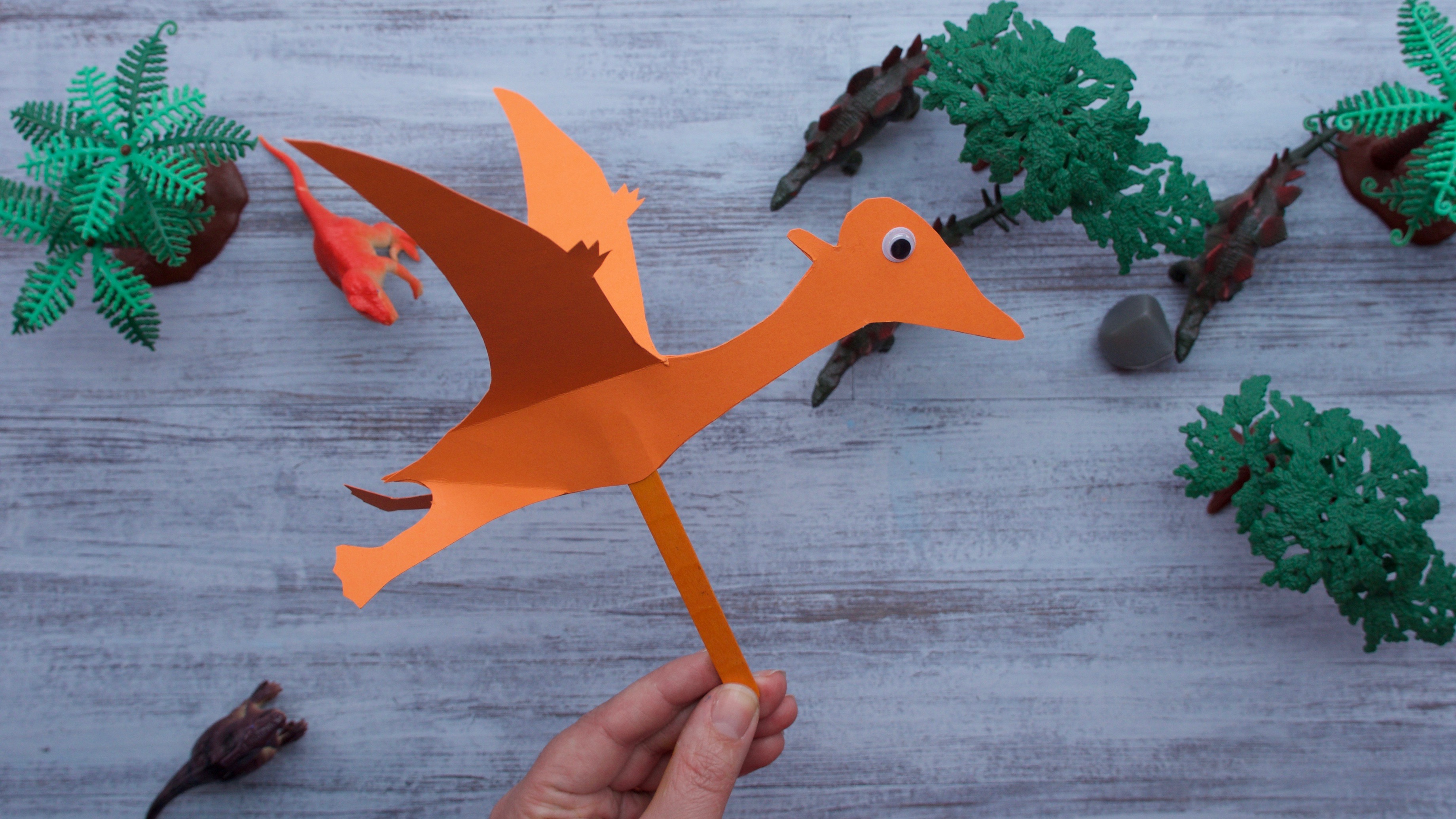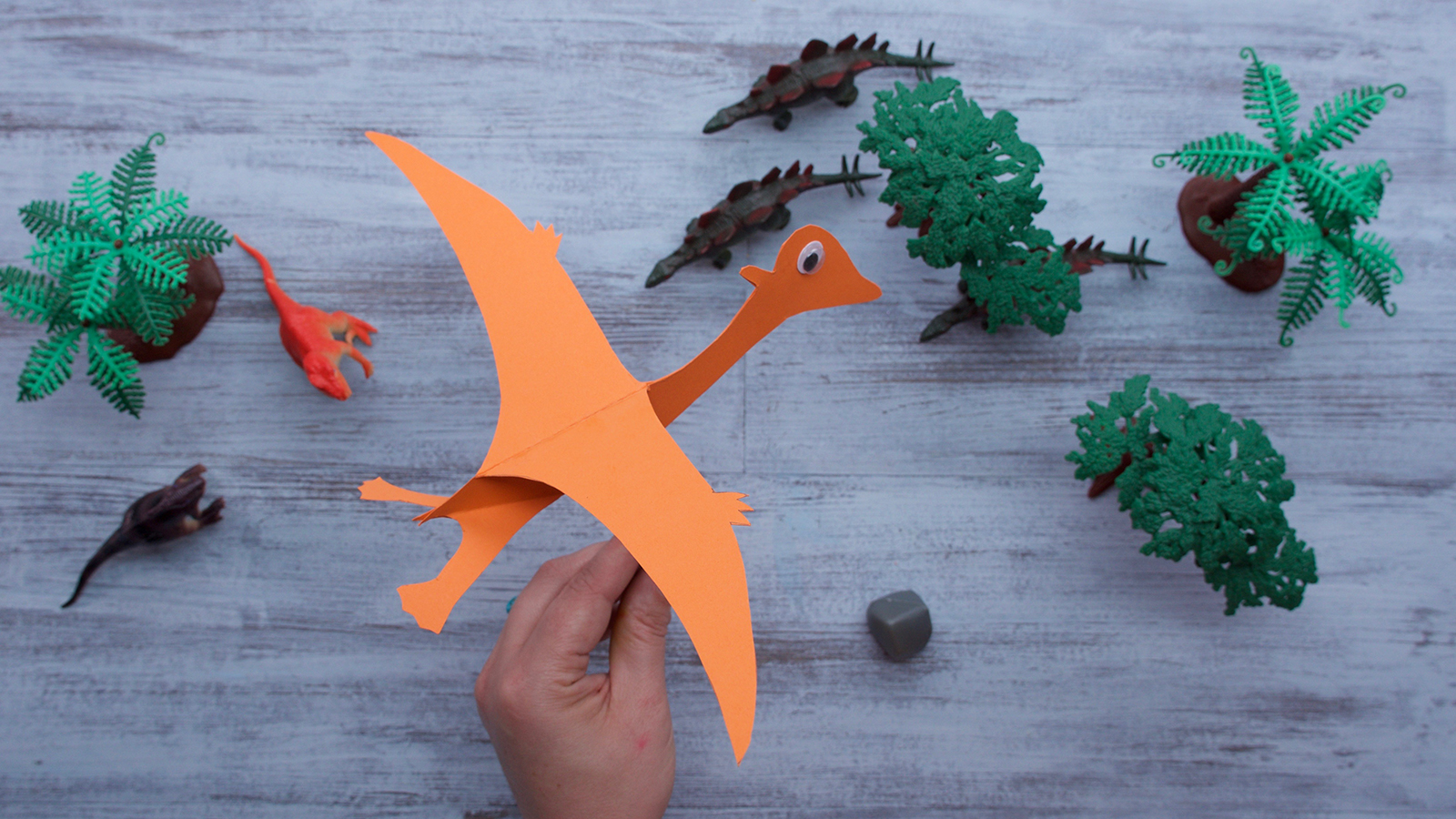
During the time of the dinosaurs, flying reptiles called pterosaurs (pronounced “tare-o-sores”) flew in the sky. Pterosaurs were not birds or dinosaurs, but a related group of reptiles. They flew on wing membranes supported by one long finger.
Pterosaurs came in all sizes. Little Anurognathus was the size of a small bird. But Quetzalcoatlus had the wingspan of a small airplane, and when it stood on the ground, it was as tall as a giraffe!
Follow these instructions to make a paper puppet of a
small pterosaur called Pterodactylus.
Pterodactylus lived in Germany about 150 million years ago, the same time that Brontosaurus and Stegosaurus were walking around North America. It was about the size of a seagull, and like seagulls, it probably ate fish.
Many pterosaurs had bony crests on their heads. For a long time, scientists thought Pterodactylus didn’t have a crest. But they recently discovered that it actually did – though its crest wasn’t made of bone, but of softer tissue.

You need:
- Bristol board, any colour
- Printed Template
- Popsicle stick
- Googly eyes (optional)
- Scissors
- Glue
Print out this template and cut it out, then trace it twice onto a piece of Bristol board. We like red or orange (the brighter, the better), but any color is fine. Nobody knows what colour pterosaurs were!

Cut out your two pterosaur outlines. Fold along the lines to make the wings and the legs stick out sideways. Bend the wings in both directions to make them flap more easily.
Glue the top part of the popsicle stick to the torso of one of your pterosaur cut-outs, pointing straight down. This will be the rod you use to control the puppet. Then glue the second cut-out to the first cut-out with the popsicle stick in between them. Be careful not to glue the wings or the legs together!
Glue on a pair of googley eyes if you have them. You can also use markers or coloured pencils to decorate your pterosaur.
To puppeteer your pterosaur, hold the popsicle stick and bounce it up and down. The wings will flap!

Don’t forget to follow us on Twitter, Instagram and Facebook! Use the hashtag #SuperSimpleDinoWeek to share all your dinosaur creations with us. Share a photo of your pterosaur with the hashtag #PteroPuppet. You can even make a whole flock of pterosaurs!
Don’t miss 10 Little Dinosaurs 2 on Super Simple Songs!
Special thanks to John Conway, Michael Habib, Gabriel Ugueto, and Bruce Woollatt for their advice on pterosaur anatomy. Note: This animal is called Pterodactylus, but the group of animals it belongs to is called pterosaurs, not pterodactyls!
Don’t forget to follow us on Twitter, Instagram, Pinterest, and Facebook!
 Contributor
Contributor
Grant Harding is a puppeteer with a degree in biology and a passion for education and the environment. Follow Grant on Twitter, or check out his website.
Original content © 2018 Super Simple. Not to be reprinted without express written permission. Terms of Service.

